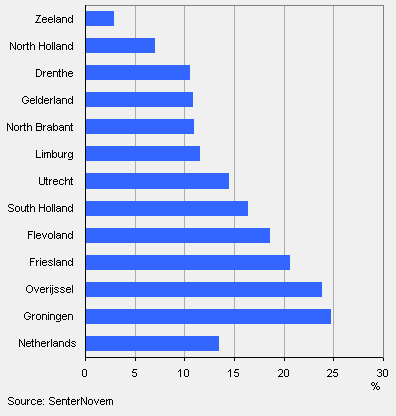One third of homes with an energy label can use a lot less energy

One in three of the nearly one million homes in the Netherlands with an energy label fall in energy category E, F or G. This means that they have a relatively high energy use and many measures can be applied to save energy. Eleven percent of homes are labelled in categories A++, A+, A or B. These homes are already using most of the energy saving measures available. Most Dutch dwellings (56 percent) fall in category C or D.
Since 1 January 2008, owners of buildings in the Netherlands are required to supply new tenants and buyers with an energy label for the building. This label is an indication of the standardised energy use of the dwelling and available energy-saving options. The percentage of homes which have been provided with an energy label differs strongly between the provinces. Only 3 percent of dwellings in Zeeland have a label, compared with nearly one quarter of homes in Groningen. This difference is probably caused by the relatively low mobility in Zeeland compared with Groningen. As a result, fewer homes fall under the labelling requirement. In addition, there are relatively few rented dwellings in Zeeland. In 2008 a number of housing corporations labelled their complete housing stocks.
Percentage of homes with an energy label per province, 1 July 2009

Less than 10 percent of dwellings in the municipalities Amsterdam and The Hague have an energy label, while in Rotterdam and Utrecht, around 20 percent of homes have been labelled.
Karine Tanis and Hermanus Rietveld